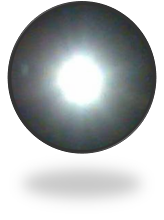Contact however is just a byword of ages gone by. The new realm in sensing has been replaced by remote. Volcanoes and even hurricanes normally do not make you feel they're coming. But the advent of remote sensing technology has changed all that.
The crew of a broadcast network through its communications van delivers images close to touch to the television screen into households or offices. They record or capture real-time images but though they may be are far from and not physically nor intimately in contact with the object of their coverage.
Delivery of images and sound, as almost transmitting feel, by remote was the trend and will become the norm in the days to come. Remote sensing devices, for instance that do the same as broadcast networks but with applications in other areas such as engineering, biology, chemistry, medicine, archeology, anthropology, zoology, volcanology, mapography (not a Webster's or Britannica term), photogrammetry, polarimetry, astronomy, geology, among many others deliver information to the household, to offices, science research laboratories, analyst's desks, etc. from various platforms like land transport, aircraft, spacecraft, satellite, buoys, or ships.
For this reason we are able to view portions of the crust of planet Mars (visited by NASA space probes), the surface of the moon, the Vista of Bill Gates and Apple and Linux's superb desk- and laptop screen imageries of outer space, and so many other distant objects and phenomena. According to wikipedia, a doctor is able to monitor her or his patient's pregnancy through remote ultrasound or Magnetic Resonance Imaging (MRI) in the same way that by monitoring of space probes of the planets and other heavenly bodies by Positron Emission Tomography (PET) is done by NASA and other space agency experts.
Modern remote sensing relies heavily upon imaging sensor technologies. A security specialist from Malaysia who conducted a small seminar in Makati City fairly recently, said that the best remote surveillance system will always depend on the high quality of the image sensor and capture device (in simpler terms, a camera with built-in sensing-detection capability).
With the interconnectivity of many technologies, we are not far from simulating touching the very rocks of the moon that Armstrong and his fellow Apollo astronauts supposedly stepped on. We will not be far from physically viewing the contents of our personal deposits in safekeeping by trusted banks or financial custodian outfits. Observing what is happening in our offices and homes while being as far as 8,000 miles away or more than 20,000 feet above sea level in Mt. Everest or 40,000 feet on board an aircraft.
The only drawback to this technology is the high level of radiation involved. Between passive and active sensor activities, radiation is always present. It is the contention that natural radiation emissions are only those involved in the discipline of remote sensing. This is not true. Even simple mobile cellular telephones have radiation that doomsday sayers denounce as carcinogenous or causing cancer.
How scientists will bring down considerably the levels of radiation involved to levels really below the human thresholds, is a major obstacle to resolve. This will ultimately be remedied.
So, the age of remote has finally arrived. Numerous changes have been happening as advances in remote technologies are made each day, week, month and year. Before we know it, no one needs to schedule a meeting in person with a lover who is several time zones away. You can make love by remote and get to touch each other as if you were physically together. Remote sexing, as it were. Just be careful to tone down the radiation to tolerable levels... :)

No comments:
Post a Comment